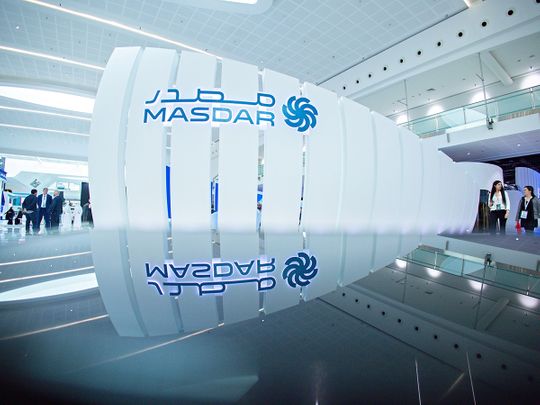
Abu Dhabi: Masdar, a major operator of solar power plants in the UAE, is planning to raise as much as $1 billion through its second offering of green bonds, after borrowing $750 million earlier this year.
The company will likely issue more green bonds in the next six to nine months, potentially in the US, Chief Financial Officer Niall Hannigan said in an interview on Wednesday in New York. The prospective issuance is part of its plan to raise at least $3 billion to fund clean energy projects, he added.
“$750 million to $1 billion is probably where we’re looking,” said Hannigan. “We think that fits about right but that will be something that we will assess at that time.”
Ultimately, the size of future deals will depend on the pipeline of projects that it needs to fund and how much it can afford to borrow given its credit rating, Hannigan said. The company is rated A2 by Moody’s Investors Service and A+ by Fitch Ratings.
Elusive ‘greenium’
Hannigan isn’t convinced that green-bond issuers are currently paying less to borrow from the market. “Maybe I’m a skeptic, but I’m not convinced that people are paying that greenium right now,” he said.
On average, the so-called greenium, which measures the spread of green bonds to non-green bonds from the same issuer, has been disappearing in the US investment-grade market since May 2022, according to a July note by HSBC. That’s because of the backlash in the US against investing strategies that factor in environmental, social and governance considerations, the note said.
Masdar saw investor demand exceeding $4.2 billion for its first green-bond sale in July, but didn’t see that greenium reflected in the pricing, Hannigan said.
Still, the pushback against ESG investing in the US hasn’t deterred Masdar, he said. Investors were interested in Masdar’s bond offering because it was issued according to the company’s framework, it received a second-party opinion, and proceeds from it will be used to fund new solar, wind, and battery-storage projects, Hannigan said.
Bridging the gap
Masdar is borrowing money from institutional investors in the US through green bonds to spend it on renewable energy projects in developing nations, Hannigan said at a panel discussion organized by the Climate Bond Initiative on Wednesday. It’s a challenge because the capital available to be deployed for green energy projects doesn’t necessarily go to regions that need it the most, he said.
“Bridging that gap is absolutely critical,” said Hannigan. “We can talk about what’s happening in the US and what’s happening in Europe. But if we cannot see the same pace of growth in places like Africa, in places like Central Asia and Southeast Asia, then the energy transition faces enormous challenges.”








